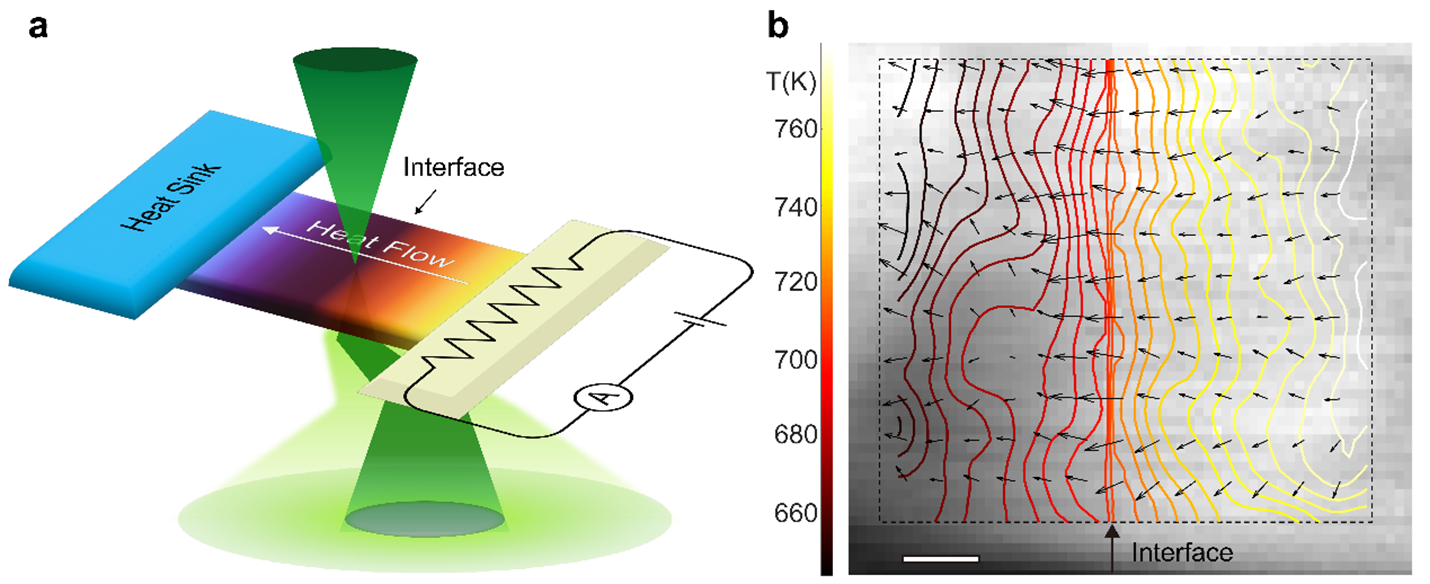
Peking University, June 20, 2025: Gao Peng’s research group at the International Center for Quantum Materials, School of Physics, Peking University, has developed a breakthrough method for visualizing interfacial phonon transport with sub-nanometer resolution. Leveraging fast electron inelastic scattering in electron microscopy, the team directly measured temperature fields and thermal resistance across interfaces, unveiling the microscopic mechanism of phonon-mediated heat transport at the nanoscale.
The study is published in Nature under the title “Probing phonon transport dynamics across an interface by electron microscopy.”
Background
Phonons are central to heat conduction, electrical transport, and light interactions. In modern semiconductor devices, phonon mismatches at material interfaces create significant thermal resistance, limiting performance. Yet, existing methods lack the spatial resolution needed for today’s sub-10 nm technologies.
Why it matters
This study addresses a long-standing challenge in nanoscale thermophysics: measuring interfacial temperature changes and resistance at atomic precision. It provides a powerful new tool for characterizing heat transport in embedded interfaces, defects, and nanostructures, which are key for next-generation semiconductors.

Figure 1. Microscopy techniques for visualizing phonon transport. a. Schematic diagram of the experimental design. b. Isotherm distribution (colored lines) and temperature gradient direction (black arrows) near the AlN/SiC interface. Scale bar: 200 nm.
Key Findings
In this pioneering study, the team developed a phonon visualization technique using electron microscopy that enables temperature and thermal resistance mapping with unprecedented sub-nanometer spatial resolution. Using a custom-built in-situ heat transport device, they stabilized heat flow across an aluminum nitride/silicon carbide (AlN/SiC) heterojunction, resulting in the most precise interface temperature mapping reported to date.
Under a temperature gradient of 180 K/μm, Gao Peng’s team observed a sharp temperature jump of 10–20 K occurring within just ~2 nanometers at the AlN/SiC interface. In contrast, a similar temperature drop in bulk AlN or SiC would span tens to hundreds of nanometers, indicating that the interfacial thermal resistance is approximately 30–70 times greater than that of the bulk material, highlighting the critical role of interfaces in nanoscale heat transport. The researchers also identified non-equilibrium phonon states within a ~3 nm region near the interface, deviating from the Bose-Einstein distribution. By comparing phonon mode distributions under forward and reverse heat flow, they revealed dynamic inelastic transport processes, providing key insights for chip interface design and thermal management.
Future Implications
Stuart Thomas, senior editor of Nature, commented and specified the importance of this study for future applications.
"Measuring temperature at the nanoscale is already an extremely challenging task. This paper goes beyond that and gives us an insight into how heat flows across interfaces at these very small scales, and the phonon interactions that mediate such processes. The materials studied here are also important as there is interest in their use on high-power electronic devices, where thermal management is critical."
*This article is featured in PKU News "Why It Matters" series. More from this series.
Read more: https://doi.org/10.1038/s41586-025-09108-6
Written by: Akaash Babar
Edited by: Zhang Jiang
Source: PKU News (
Chinese)

